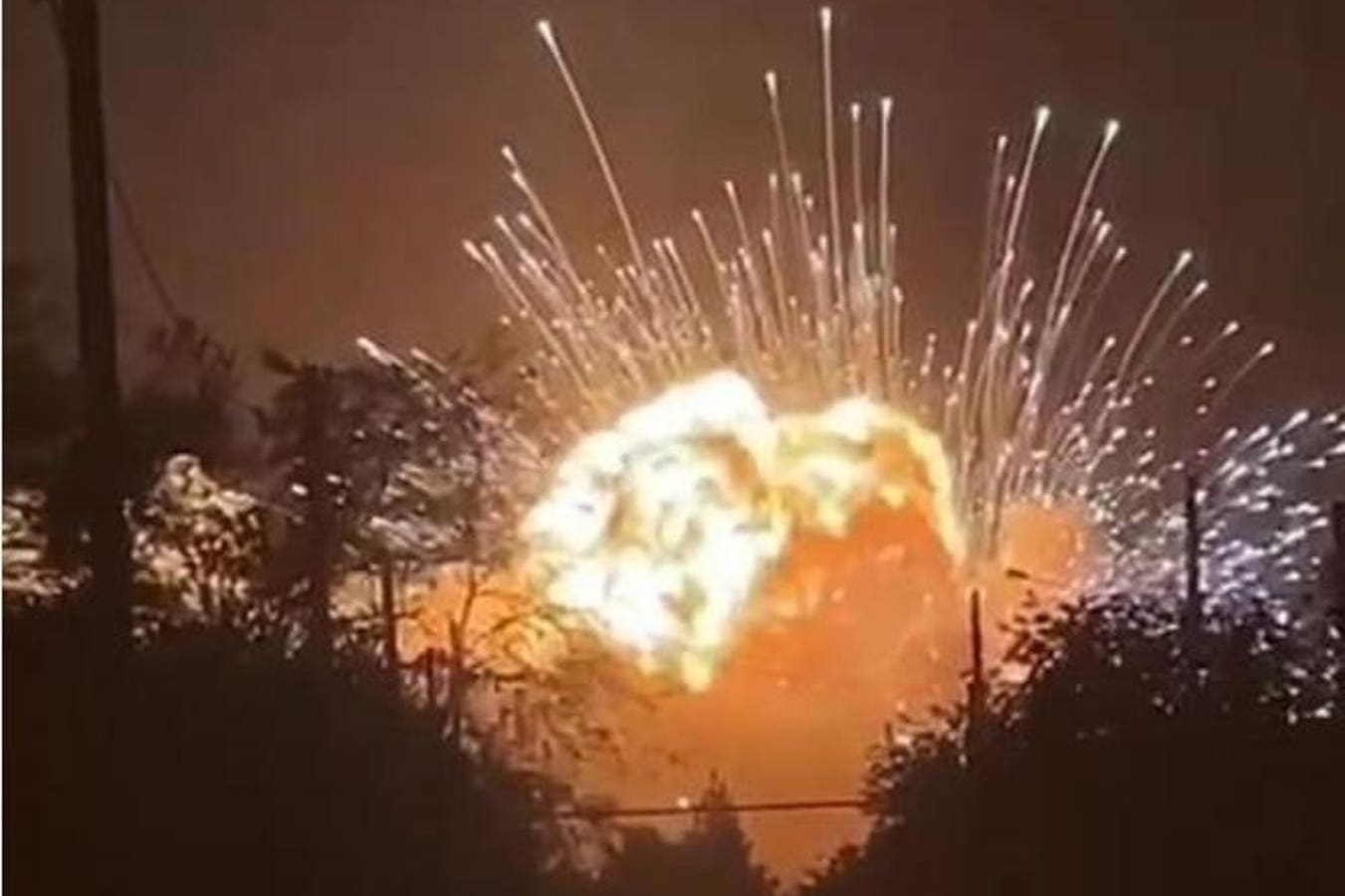Four days after blowing up a huge Russian ammunition stockpile in the town of Toropets, in western Russia 300 miles from Ukraine, Ukrainian drones struck again—landing a second blow on arsenals in Toropets on Saturday morning while also triggering a massive blast in Tikhoretsk, in southern Russia just 200 miles from the front line in Ukraine.
It’s increasingly evident, though not yet confirmed, that the Ukrainians are using their latest explosive unmanned aerial vehicle—the jet-propelled Palianytsia “missile drone”—for these devastating raids.
The ammo dump in Toropets reportedly held large stocks of small arms rounds, mortar shells, artillery rockets and long-range ballistic missiles potentially including Russian-made Iskanders and North Korean KN-23s.
According to the Ukrainian general staff, the dump in Tikhoretsk “is one of the three largest occupying ammunition storage bases and is one of the keys in the logistical system of Russian troops.”
The general staff estimated 2,000 tons of ammo, including North Korean-made rounds, were in the Tikhoretsk dump when the drones struck. The towering fireball resulting from the impact seems to confirm that estimate. The initial Toropets raid and the later Tikhoretsk raid were both big enough to register as small earthquakes and also draw the attention of NASA’s fire-spotting satellites.
The back-to-back ammo dump raids signal a shift in Ukraine’s campaign of deep strikes targeting strategic targets inside Russia.
For many months, officials in Kyiv have pleaded with their European and American counterparts for permission to use donated long-range munitions—British Storm Shadow and French SCALP-EG cruise missiles and American Army Tactical Missile System rockets—against targets deep inside Russia, including munitions stockpiles.
But the Europeans and Americans have consistently withheld that permission. Clearly running out of patience, the Ukrainians have doubled down on the production of locally-developed weapons—drones and missiles—that they can fire at targets inside Russia without asking anyone’s permission first.
The recent attacks also signal an increase in the scale of Ukrainian deep strikes. Previous raids, some hitting targets as far as 1,100 miles inside Russia, have been logistically impressive but small in size—often involving just a handful of slow, propeller-driven drones.
By contrast, the recent raids have been much more destructive, seemingly pointing to a drone type that might not fly as far, but packs more destructive power—and is available in large numbers.
That might mean Ukraine’s new jet-powered Palianytsia, which is a cruise missile in all but name. Russians on the ground in Toropets reported hearing jet engines overhead before the local munitions stockpile exploded.
The winged, turbojet-propelled Palianytsia has been in development for more than a year but only recently made its combat debut. On Aug. 24, at least one Palianytsia struck a target in Russian-occupied Crimea, Ukrainian Pres. Volodymyr Zelensky announced.
The Palianytsia boasts a AI-PBS-350 turbojet engine, jointly developed by PBS in the Czech Republic and Ukrainian firm Ivchenko-Progress. The 220-pound AI-PBS-350 produces 3,400 newtons of thrust—enough to propel a one-ton missile several hundred miles.
That makes the Palianytsia roughly similar to Ukraine’s turbofan-powered Neptune cruise missile, at least in terms of size, speed and range.
Where the Neptune and the Palianytsia substantially differ is in their engines. The Neptune boasts an efficient but expensive turbofan. The Palianytsia’s simpler turbojet is probably less efficient, but also cheaper—meaning Ukraine could afford to build more Palianytsias than Neptunes. Potentially a lot more.
Firing more missiles results in more destruction. Where Neptune attacks have usually involved just a handful of missiles, the first Toropets may have involved a hundred missiles.
Read the full article here





